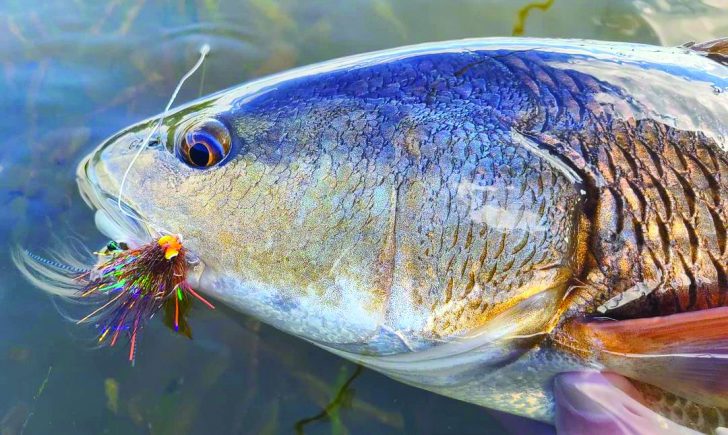by: Brendon Allen

‘Tis the season for ghosts and ghouls, so what better time to discuss the spookiest of fish for fly anglers prowling the waters of Southwest Florida — the redfish. Unlike their counterparts in other parts of the country, the redfish inhabiting our backwaters are not known to be aggressive eaters. Increased pressure has sharpened their instincts, rendering them cautious even of the most seasoned angler’s tactics. It’s not uncommon to have days on the water where the redfish are completely indifferent to even the most perfectly selected fly. Assuming the fly is indeed perfectly selected, what can be done to persuade these fish to bite? Sometimes it just comes down to the presentation.
If fly selection or casting skills aren’t the problem, the key to getting that finicky redfish to eat may be to adjust your presentation so it’s lighter and less visible. This involves making careful choices in your fly rod, fly line, and leader selection. A standard fly setup for inshore fishing usually includes an 8-weight rod, a corresponding line, and a leader ranging from 9 to 10 feet that gradually tapers down to a 16 to 20-pound tippet. While this is a typical setup, it can be adjusted for a lighter and less conspicuous presentation that should increase your odds of getting that fish to bite.
Starting with the fly line, lines that are too heavy can slap the water and potentially startle fish, especially in shallow water. Using a lighter bonefish line when using an 8-weight rod or scaling down to a 6 or 7-weight fly rod, with matching line, enables a more delicate presentation that is less likely to alert fish to your presence. However, this does come with a trade-off. Lighter fly lines are more difficult to cast in the wind, especially when throwing heavy, bulky flies. That being said, with the right conditions and a well-honed cast, using a lighter rod and line can increase the odds of enticing that wary redfish to eat.
Another variable that can be adjusted is the size and length of your leader and tippet. Opting for a leader that tapers down to a thinner 8 to 12-pound tippet allows for a stealthier presentation, which is especially important in the upcoming winter months when the water is clear and tides are low. Additionally, extending your leader to 10 to 12 feet allows for a softer presentation by creating more separation between your fly and the fly line. It is important to keep in mind that longer and lighter leaders can be more difficult to turn over, so always practice your cast and experiment with these combinations at home before employing them on the water.
Fly fishing for redfish can be challenging, but with a few variables dialed in, it’s possible to get even the spookiest of fish to eat.

